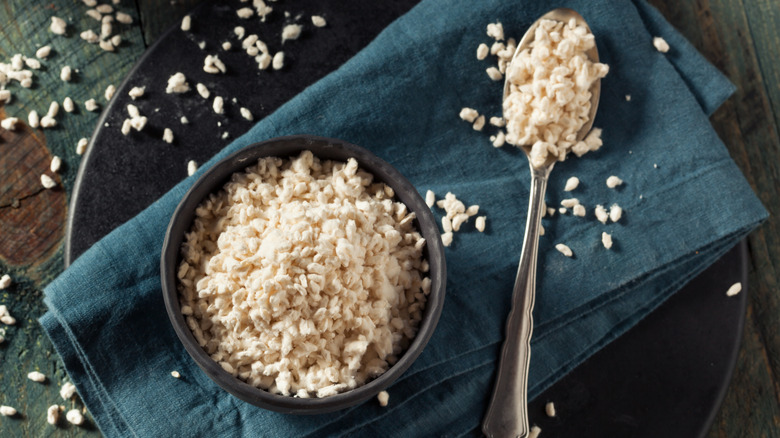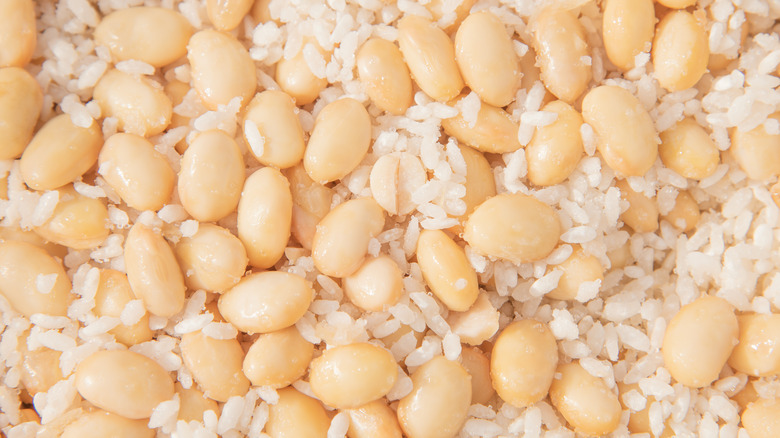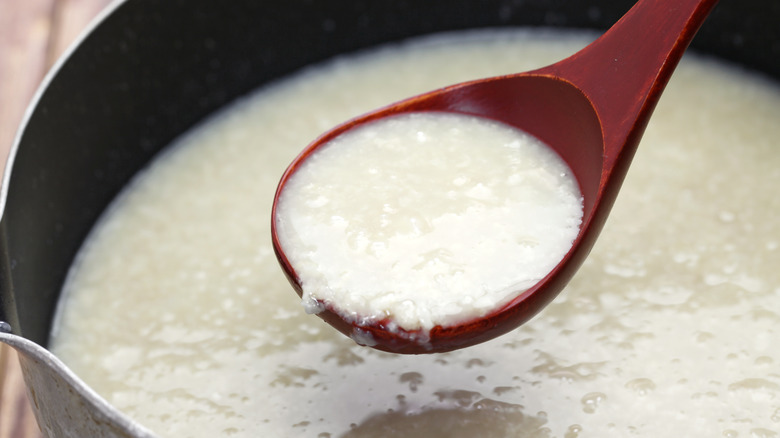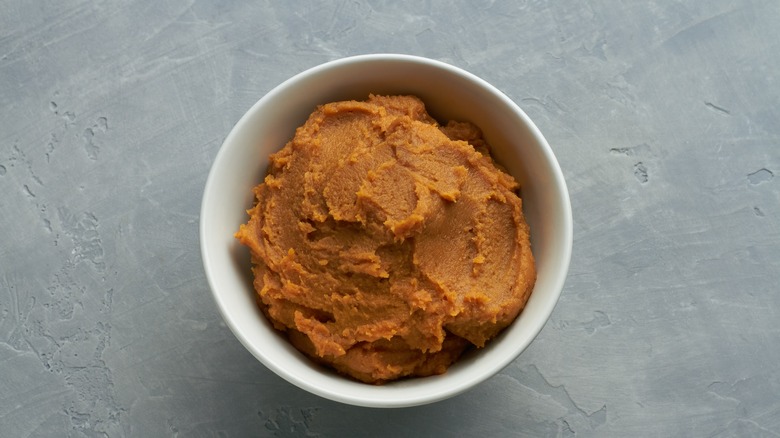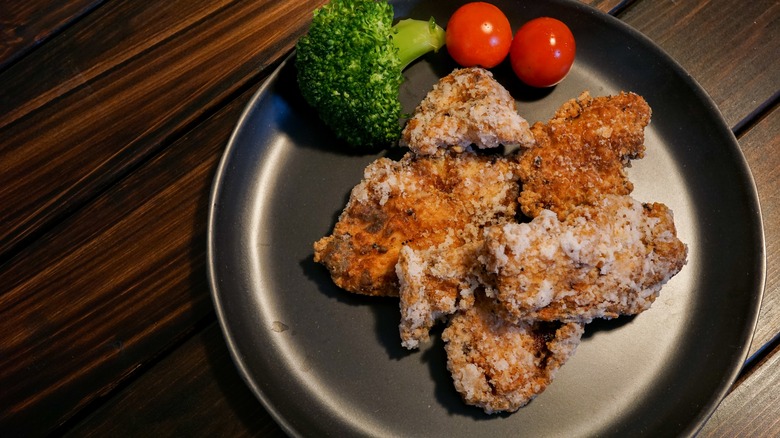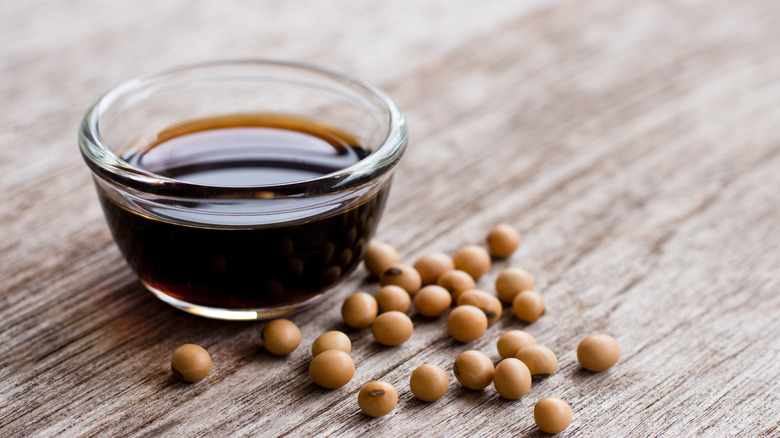What Is Koji?
We may receive a commission on purchases made from links.
One of the biggest food trends today is mold. We're talking about a traditional Japanese ingredient called koji, and with the country's brightest chefs, from David Chang to Sean Brock, experimenting with it, you're going to want to pay attention.
Although koji, dubbed Japan's national mold, has been a culinary mainstay in Asia for centuries, it's only recently that Western chefs have started catching on to its transformative powers as a seasoning and a curing agent. It's not eaten on its own, but grown on partially or fully cooked grains, such as rice and barley. As the spores begin to flourish, enzymes convert the grain into sugar, and then the enzyme-rich grain is added to a second product, such as soybeans. This secondary fermentation process causes a complete transformation in flavor and texture. It's how soybeans become miso, rice becomes sake, and how soybeans plus wheat become soy sauce. This resulting flavor you know and love? Umami.
As David Chang put it in a 2013 koji-focused lecture on fermentation, "Microbes produce enzymes, enzymes develop amino acids, glutamic acid + aspartic acid = umami, umami = delicious."
Koji is made of soybeans or rice inoculated with a mold culture
Koji is produced by combining a starter culture of the mold with a sterile place to colonize; this place can be rice, barley, soybeans, or whatever the final product of the koji will be, per Soybeans. According to Revolution Fermentation, there are a variety of grains and legumes used in the commercial production of koji. Rice is usually used for amazake, a thick drink refined to make sake, while miso and shoyu are soy-based koji.
There are different types of mold used during koji manufacturing; these different types express different tastes and flavors than one another. Marukome notes the predominant types of mold in conventional koji production include yellow koji used for miso, soy, and refined sake, white koji used for shochu, black koji used for awamori (Okinawa liquor), and red koji used for Shaoxing wine, Chinese red wine, and tofu-yo.
Koji has a rich, umami flavor
Koji's primary flavor profile is the illusive umami. According to the Unami Information Center, umami is the signal to the body that protein is being produced and to kickstart the digestive process. Umami is triggered with the presence of one (or multiple) of the following three substances: inosinate (found in poultry, pork, and fish), guanylate (found in dried mushrooms), and glutamate (found in tomatoes, kombu seaweed, cheese), and the essential flavoring agent known as monosodium glutamate, or MSG. When the Aspergillus oryzae ("the mold") breaks down complex carbohydrates via enzymes, glutamate is produced, giving koji its distinct umami flavor.
Koji not only has a notable taste but a notable smell as well. These same notes are often carried into the foods created with koji. Aloha Spice Company describes koji's smell as uniquely floral with undercurrents of champagne, apple, and fresh yeast — definitely not the same moldy smell as your grandmother's basement.
Koji can be used in miso, bread, scallops, and more
Sandor Katz, author of The Art of Fermentation, who uses koji in traditional applications like sake and miso, as well as in bread making and marinades, cites "the growing interest in fermentation" for the budding koji trend. "We are in an exciting period of innovation where chefs are taking ancient processes that have been used in very specific ways, and applying them to new ingredients or in new ways."
In its natural state, koji smells floral, yeasty and citrusy, and it was this intoxicating bouquet that inspired Jeremy Umansky, master larder and forager at chef Jonathon Sawyer's Italian restaurant, Trentina, to experiment with the mold. When he was researching house-made chickpea miso, Umansky found that koji's sweet scent reminded him of a fresh scallop. After discovering he could grow koji not just on rice but also on rice flour, the chef coated scallops in rice flour, spread the spores directly onto the flour and left them in a dehydrator. Thirty-six hours later, out came fungus-coated scallops that were neither spoiled nor rank, but instead perfectly cured with firm flesh that smelled of sweet citrus and brine.
From his successful experiment with scallops, Umansky has gone on to use koji to cure heartier proteins, such as beef, lamb, chicken, pork and even llama. With koji, he is also able to make traditional charcuterie in days instead of weeks, using no salt at all.
It can also be used in Southern dishes
Momofuku uses koji in its soy-free miso-style paste called Hozon, which is made from koji-cultivated basmati rice and various nuts and legumes, such as sunflower seeds, chickpeas and pistachios. At Emmer & Rye in Austin, chef Kevin Fink makes koji-grain griddle cakes, and at Mission Chinese in NYC, chef Danny Bowien serves Hainanese-style koji fried chicken.
Meanwhile, down in Charleston, South Carolina, at McCrady's Tavern and McCrady's, Brock uses koji in almost every menu item as a way to "boost flavor." Adding koji to classic Southern dishes helps him unlock the hidden depth of flavor in indigenous ingredients. As he puts it, "If we can inoculate [Anson Mills] Sea Island red peas and make red pea koji when we make a simple dish of hoppin' John, it tastes extraordinary. And to me, that's the beauty of soul food: the idea of taking nothing, or almost nothing, and making it extraordinary. That's survival cuisine."
With the growing interest in fermentation across kitchens of all stripes, Umansky predicts that in the next two to three years, chefs will be using koji in as many products as they can. "It's just a home run once people start using koji," he says. "Once you destroy the fear of the unknown, these processes become extremely simple and applicable across a wide variety of cuisines."
Koji has a ton of nutritional benefits
There is some evidence that koji is beneficial in creating a flourishing gut microbiome of bacteria, according to the National Library of Medicine. Diversity of gut flora is important because the gut microbiome provides numerous services to the human body including digesting fibers, maintaining immunity, and even controlling physiological wellbeing, per the British Medical Journal. And the National Library of Medicine notes that shio koji, a mixture of white rice and sea salt koji, contains isoflavones. A different report from the National Library of Medicine notes isoflavones have known anti-microbial, anti-inflammatory, and even anti-cancer properties.
Registered Dietitian Rachael Link also notes that koji may be beneficial because of the mold's high vitamin and mineral levels. Miso, for example, is high in vitamin K, manganese, copper, and zinc. Link does warrant some caution though, as many products made with koji are high in sodium. Consumers should consume excess levels of food with added sodium in moderation, including soy sauce and miso paste.
You can make it at home
Koji is available at numerous grocery outlets including online retailers like Amazon. For a diverse koji selection, go to your local Asian market. These markets will have a variety of koji types with different ferment times, substrates, and flavors.
According to The Japan Store Blog, you can purchase either raw koji or dried koji to start your own koji bloom at home. Once you have a container of starter (koji-kin), you are ready to make koji at home. Science Meets Food reports that for a rice koji, you'll first want to soak short-grain white rice overnight first to remove some of the starches. Then, the rice should be steamed so it is slightly firmer than normal rice but still tender. After the steamed rice is cooled, the koji-kin is added and incubated for between 18-to-22 hours. After a few days of systematically breaking apart the rice clumps and re-covering the mixture, the koji will be active and ready for use.
Because the mold is sensitive to changes in the environment and microbes on human hands and surfaces, it is important to keep your budding koji in a safe, clean place where the temperature is controlled. Cold and dry conditions will not allow the mold to flourish.
Koji can be refrigerated or frozen
After the koji exhibits signs of growth, it is important to store the substrate in a location where the growth remains controlled. If you plan on using the koji within the first three weeks of receiving (or growing) it, you are safe to leave it in the refrigerator. If you don't plan on using the koji anytime soon, Science Meets Food recommends freezing it in a sealed freezer bag for up to three months.
Dried koji can be rehydrated in water and used as needed. Although the dried koji package does not need to be refrigerated, it should still be stored in a cold, dark place to prevent other spores from growing on it and killing the koji culture. For the freshest koji, The Japan Store Blog recommends using the koji within a few days of opening the package. It is also important to examine the expiration date on the package because the fermentation culture may be too weak after the expiration date; this results in poor flavor or minimal nutritional benefits.
